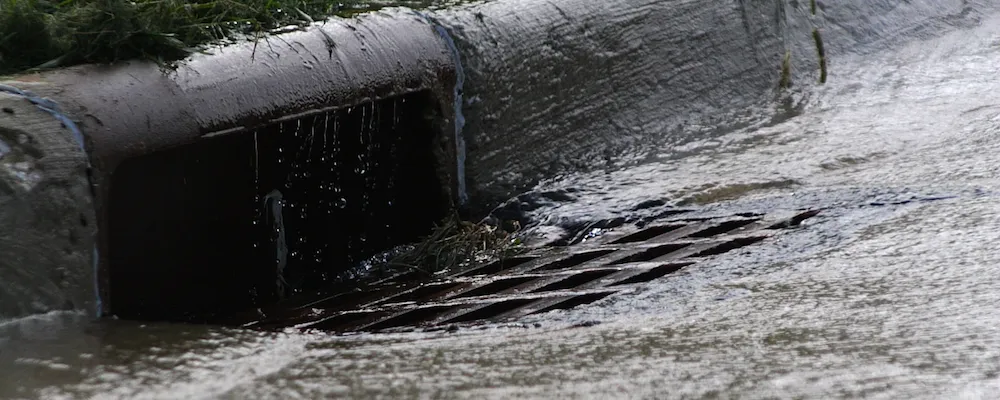Circling the Drain
Friday January 22, 2016



On Tuesday night, the Howard County Council heard testimony for a proposal to eliminate the Stormwater Management Fee. I have stayed out of this debate, which has now raged on for a couple of years. But that doesn’t make sense since I kind of know a lot about water policy and I have taught a lot of public finance. This kind of seems right up my alley. So it’s time to talk about it.
Right now, the fee is applied to all properties in Howard County based on what percentage of their land is covered with impervious surfaces. Surfaces are, basically, roofs and pavement, though esoteric options exist. As we know from decades of floodplain management experience, water doesn’t penetrate into impervious surfaces and when it does runoff to grass or a pervious surface, the ground does not usually have the capacity to absorb excess runoff. For once-in-a-lifetime storms, this is unavoidable. But next to, say, a parking lot, every rainfall is a once-in-a-lifetime storm event. Most recently, we have seen in Illinois how buildout have moved the floodplain, and not away from people.
So these runoff waters do not seep into ground where they are naturally filtered and rejoin the water table. These runoff waters never get absorbed. They travel to the nearest stream and in most of Maryland, eventually wash out into the Chesapeake Bay. Along the way, they pick up all the nasty stuff that was on the ground: plastic bags, oil, fertilizer, and even chicken poop. And that’s killed the Bay, pushing down crab and oyster populations, and severely damaging the aquaculture industry.
The stormwater management fee pays for restoration and stormwater management. These are EPA-mandated and the State of Maryland has established a few different ways to handle this. One is to pay for the associated costs at the county-level and Howard County allocates that expense amongst those who cause it, according to the damage done. This bill proposes to shift it directly to taxpayers. I’ve got a bad feeling about this.
The testimony on the proposal was kind of odd, including Diane Wilson, the county’s chief of staff, completely unable to explain anything at all about the proposal. I am assuming this is because she knows the numbers don’t add up, something anyone who spent more than 5 minutes with the county budget would recognize. And as weird as Wilson’s clear fear of being asked a question was, things got really surreal after the Rev. Paige Getty testified against the proposal. Here’s her testimony on YouTube:
The Rev. Getty is the senior minister at the Unitarian Universalist Congregation of Columbia. Councilman Fox’s questioning seemed a bit, uh, ungrounded. To summarize, his point was this is disproportionately paid by businesses, who pay up to “20 to 50 percent of their property tax bill” in stormwater remediation versus homeowners who pay around 1 percent. That certainly sounds unfair, which is Fox’s point, until you understand why.
There are two reasons for this. First, is the real tax rate paid. In Howard County, the real property tax rate is $1.014 per $100 assessment, on a 100 percent valuation. Homeowners get a smallish rebate for living in their home. Businesses, on the other hand, can get much more interest real estate tax refunds. These range from a 10-year sliding refund for doing business in Howard County to speciality rebates for energy efficiency and alternative using energy sources. In Howard County, if you’re paying full property taxes on commercial land, you’re the worst business owner in town. So that’s one reason business pays more as a percentage of their tax bill, but its more an artifact of the political environment…and mostly one we want to encourage.
The other, and much larger, reason businesses pay more for stormwater management is they cause more problems. I live in a townhouse. The small roof plus a few dozen square feet of sidewalk are my crime against stormwater. And that’s bad in aggregate, across all homeowners. That’s why we all pay. But there are other more troubling problems. The Mall in Columbia, for instance, is basically 700,000 square feet of unmitigated impervious surface. Other shopping centers are smaller, but are still large concentrated impervious surface areas. Other commercial properties, such as the Gateway and Snowden light industrial areas are also large, mostly unmitigated, impervious surfaces. They should pay more because it costs more to fix the damage done.
Ultimately, nobody is paying their full weight on this. Howard County contributes roughly $10 million out of the general fund to pay for remediation. And that’s something to keep in mind when we discuss tax equity. But the plan to pay for remediation entirely out of the general fund is a plan to push the cost of commercial development directly onto Howard County’s resident taxpayers.
Image by Robert Lawton via Wikimedia Commons.